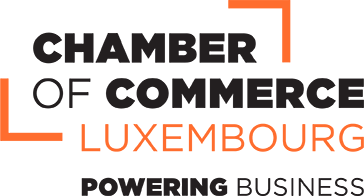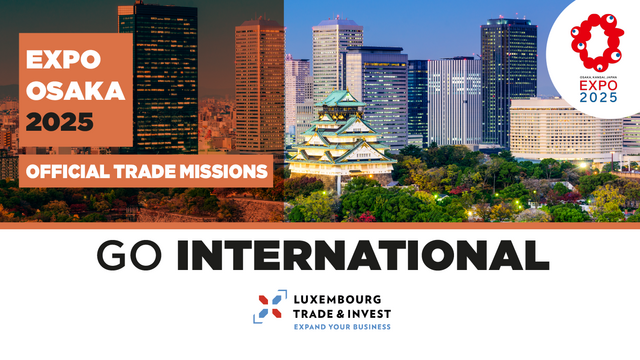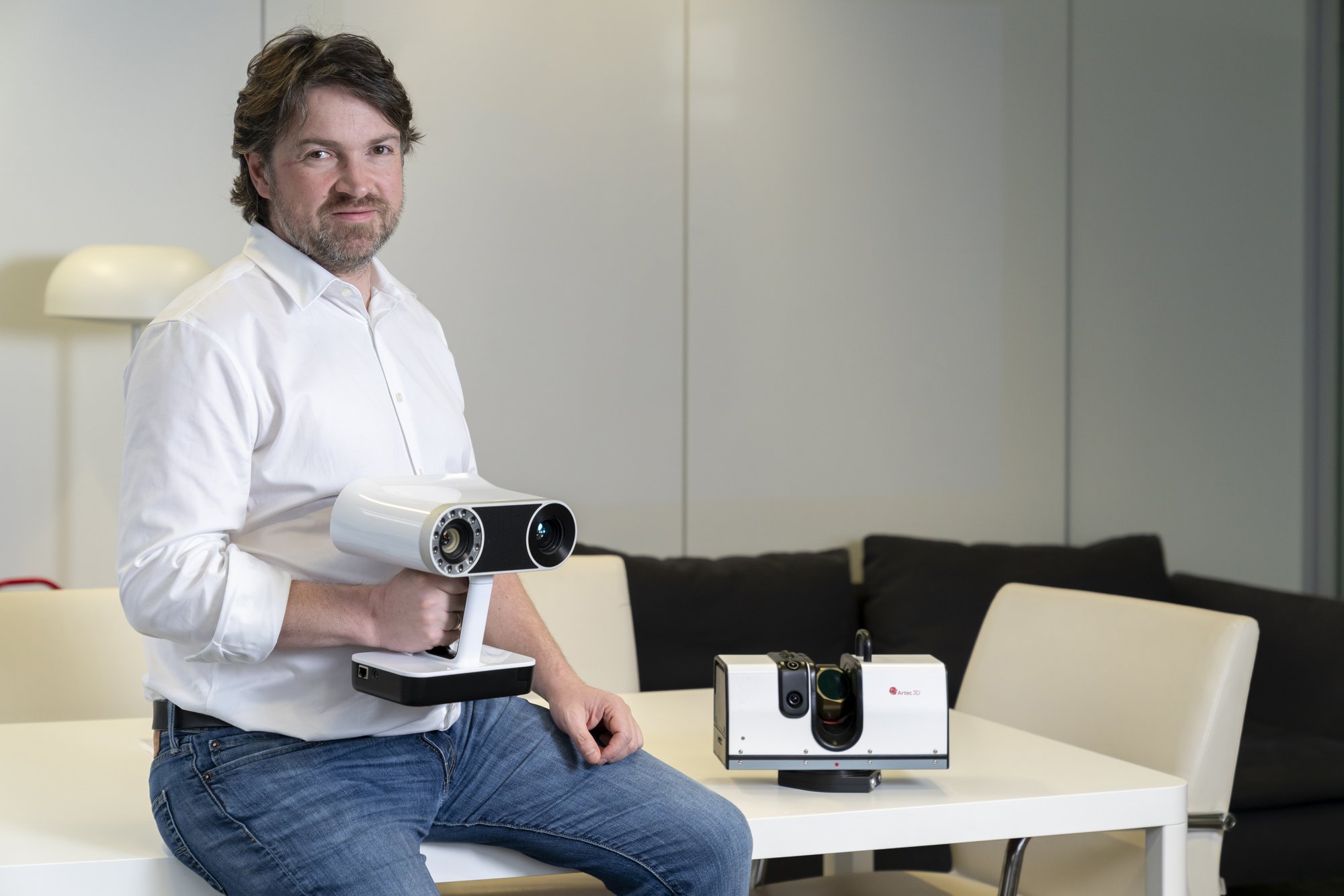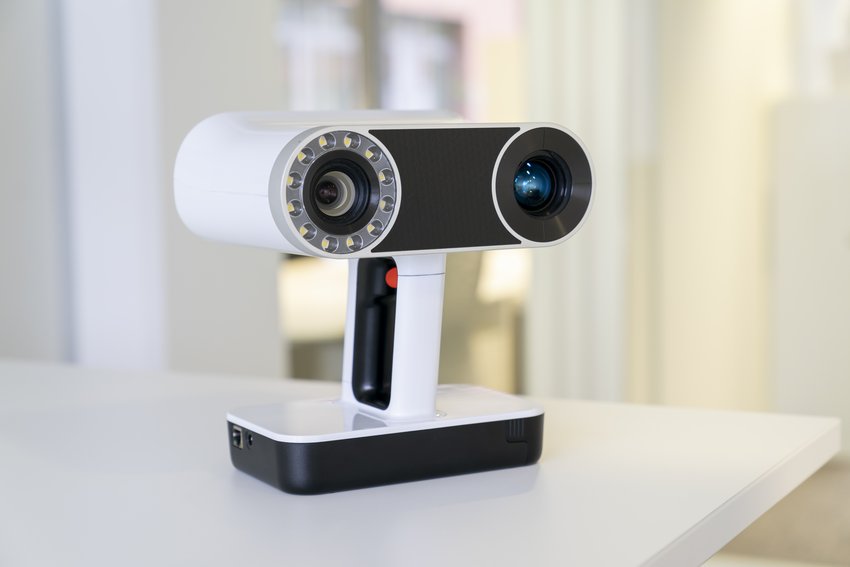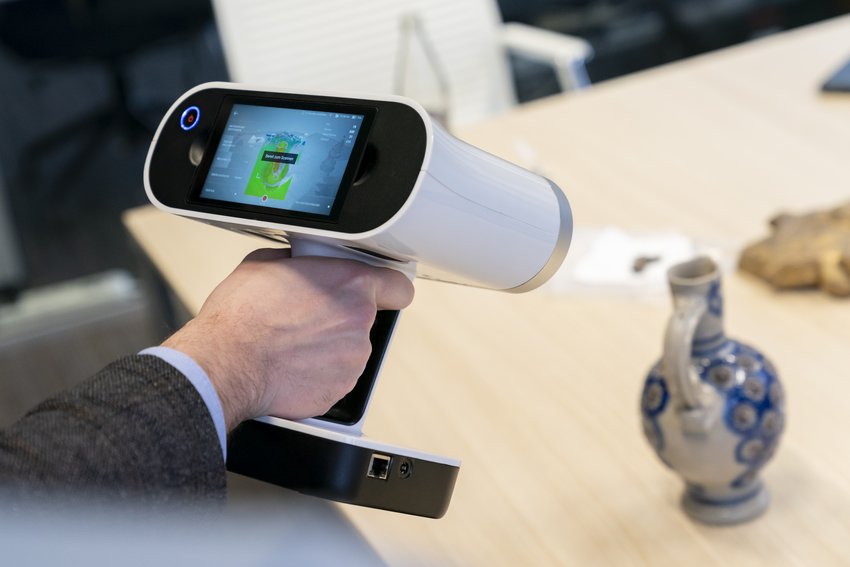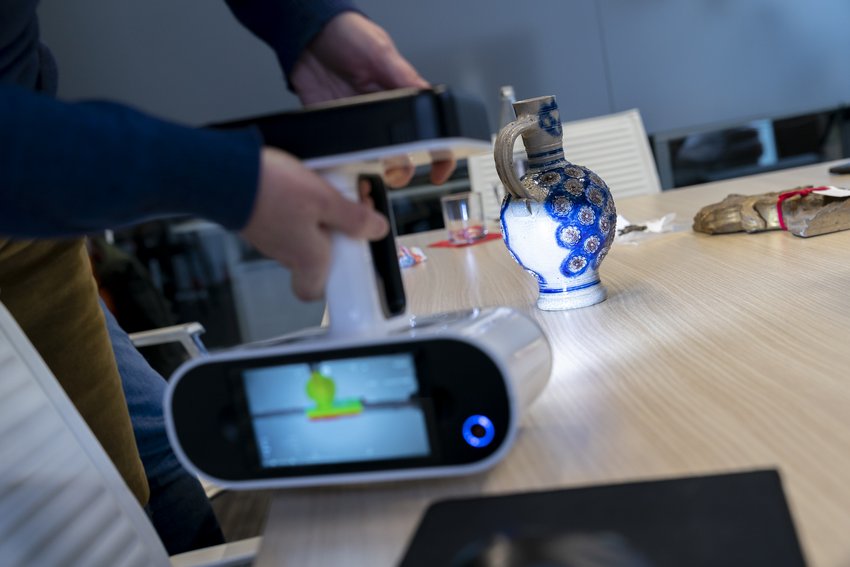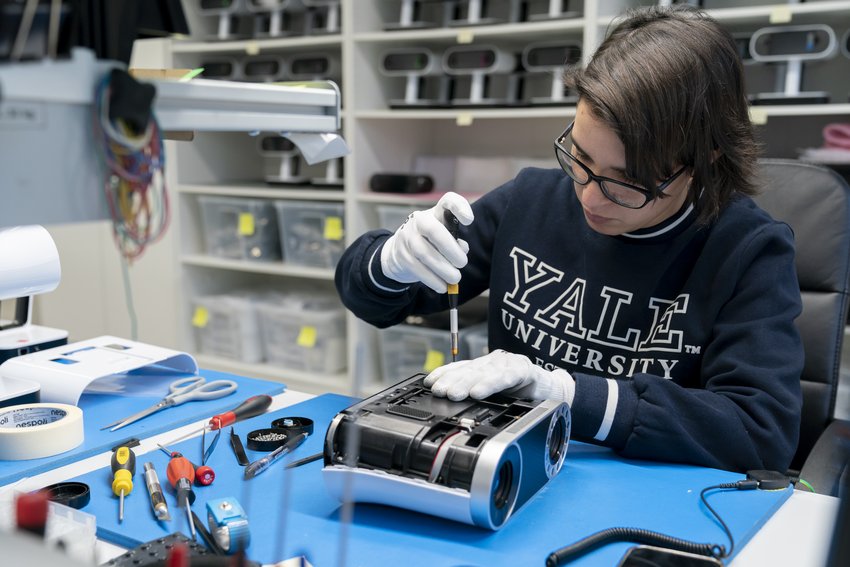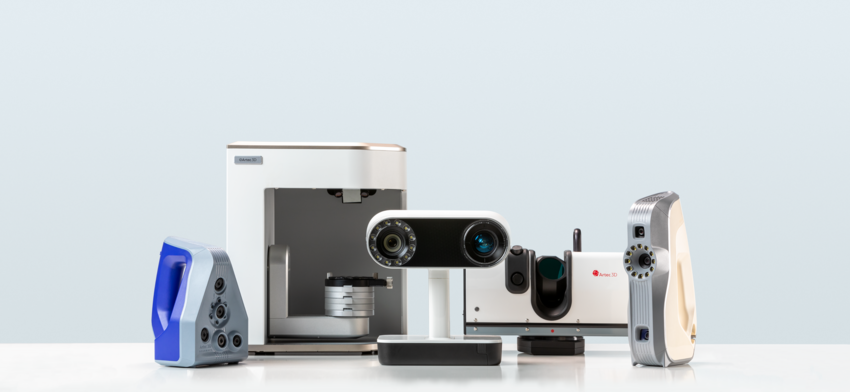
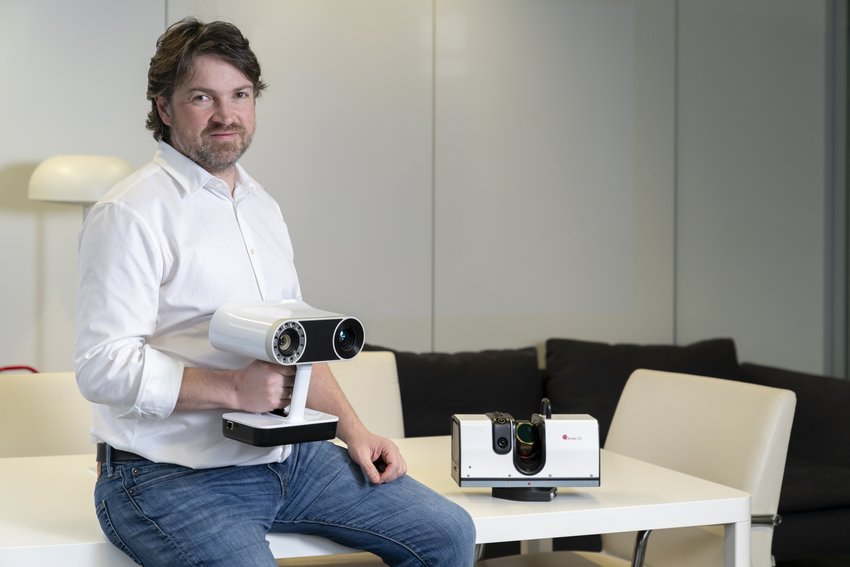
Artec 3D, a world-renowned developer and manufacturer of professional 3D scanners and software, is a unique company in many ways. Its innovative products are always ahead of its competitors. Its background is also unusual. While most IT hardware startups often take several years to break even, Artec 3D did it in only a few months after marketing its first products. Instead of staying in the Californian Silicon Valley, where it was created in November 2006, the company moved to Luxembourg four years later. Unlike the others who outsource their manufacturing somewhere in Asia, Artec 3D launched its in-house production line in Hamm but opened an innovation hub in… Montenegro! Even its business model is different: the company never sells its hardware directly but offers for sale an annual subscription for the software separately. Interview with the founder Artyom Yukhin, as atypical as its company.
<script src="https://player.vimeo.com/api/player.js"></script>
How did the Artec 3D adventure begin?
I have always been interested in machine learning for optical systems, mainly 3D computer vision. So, I got a master’s degree in optics and electronics. In my diploma thesis, I suggested using face 3D scanning in biometrics and robotics and a new mathematical approach for 3D scene analyses. Then I started a Ph.D. degree, but left the academic world very quickly. Less than two years after graduation, I moved to Switzerland, where I founded my first company, A4vision, in 2001. Based on optical technologies and biometric algorithms patented by me, our company was able to build a technology that could capture video images in real time and identify faces at a rate of six times per second. Our first product, Face Tracker, sold several million copies. Because most companies investing in our startup were American (Motorola, Menlo Ventures, Larry Ellison private fund, In-QTel, etc.), we moved our headquarters from Geneva to Cupertino in California. Later, A4vision was sold to BioScrypt, a Canadian company specializing in fingerprint-based biometric solutions, and then I set up a new company, Artec 3D, in Silicon Valley.
Three years later, in 2010, you relocated your headquarters to Europe. Why?
There are several reasons for this. First, most startups in California need venture capital to grow their business. That was not the case for us. When we launched in October 2008 our first portable scanners, we created a real breakthrough. For the first time, professional scanners could position themselves in space simply by referring to the object they were scanning. The success was immediate and we reached break-even some months later. So why would we raise venture capital? At this time, I already had an experience as an investor in some technology companies. I knew that in Silicon Valley, you always want it to stay not so far from you when you invest in a company. In other words, if we had received venture funds from the United States, we would have had to stay in California. That was what we did not want. Staying in the United States was not an option for us. It is complicated for a Silicon Valley startup to establish itself in Europe. To do this, they must first conquer the US market. Our problem was that 60 to 70% of customers were European! We needed to be in Europe. Managing the sales on the old continent from our headquarters in California was almost impossible. The third reason for leaving the United States was that we wanted our in-house production and complete control of our products. However, production in California is costly, so all the startups outsource their manufacturing abroad, mainly in Asia.
When you decided to move your company to Europe, was Luxembourg your first choice?
No, to be honest. I was about to open an office in Switzerland when I met Luxembourg diplomat Gaston Stronck. He arranged a meeting with the Minister of Economy, Jeannot Krecké, who convinced me of the numerous advantages of his country for our company. It is at the centre of Europe, neutral in a good sense and has a good reputation. So, we opened our first office in Luxembourg. A few months later, we decided to go a step further. We relocated our headquarters, management staff and intellectual property here and launched our inhouse production line in Hamm. Since then, we have not stopped growing. Today, Artec 3D employs around 100 employees in Luxembourg. In 2023, we will inaugurate our new factory in Senningerberg. Scanners are already produced there, but our clean room, a workspace free from dust and other contaminants where we can create the most sophisticated electronic components, will be operational later, in principle at the end of this January.
Do you have offices abroad?
Yes. Our two offices in the United States and China handle regional sales, marketing, support and showrooms. We also have a network of 150 authorized resellers in more than 60 countries. In May 2022, we opened a new European office located on the Adriatic coast in Montenegro. This new hub fulfils several missions. It is a research and development centre and a location dedicated to training and support. Currently, about 100 researchers, mathematicians, software engineers, digital marketers and other professionals from 11 countries, including Singapore, Japan and the UK, are working there.
Isn't Montenegro a strange option to open an innovation hub?
As you may have guessed, the history of Artec 3D has always been punctuated by strange decisions (laughing). More seriously, we chose Montenegro because it provides many opportunities for our company to continue to expand. The conditions are favourable for private sector development, especially for European tech companies like ours. Administrative procedures are kept to a minimum: it takes only a few weeks to obtain a work permit for a new employee, regardless of their country of origin. Moreover, attracting talents to grow our multinational team – our employees come from 25 countries - becomes easier with this new location. They can start to work immediately in an attractive living and working environment with warm weather and a nice view on the Adriatic coast! They are also paid in euros. Few people know this, but Montenegro is one of the two territories (along with Kosovo) that has unilaterally adopted the euro as its de facto domestic currency.
Can you tell us more about the different products you market?
Our 3D scanners can provide an exact digital replica of almost everything, from a human shape to large or tiny mechanical parts, from capturing a crime scene to creating prosthetics for amputees, preserving cultural heritage sites or carrying out quality controls. The range of professions that can use our scanners is vast, including archaeology, forensics, palaeontology, virtual reality, game design, education, research, reverse engineering and so on. Our flagship product, Artec Leo, is the first wireless and fully standalone handheld professional 3D scanner to make scanning as easy as filming a video with your smartphone. Even a child can use it! With embedded AI computing, a 5” HD built-in display and a battery, it is the ultimate all-in-one solution for fast, accurate, high-quality 3D data capture. In addition, the software enables you to scan directly to the cloud, remote control the scanner and even build your functionality with a dedicated API (Application Programming Interface, editor’s note) and SDK (Software Development Kit, editor’s note). Our bestselling handheld 3D scanner on the market is still Artec Eva, a universal scanner such as Artec Leo but without embedded AI computing. Our other scanners are used for specific purposes: Artec Space Spider and Artec Micro for small objects or intricate details of large objects, Artec Ray for precisely capturing massive objects such as bridges or buildings and Artec Shapify Booth, a oneclick body scanner. We also sell 3D software. We were the first to charge the software separately from the hardware on an annual subscription base. Every year, our teams update the software version that improves hardware use. For example, in 2020, we achieved more than double the resolution for our scanners Artec Eva and Artec Leo with AI-powered HD Mode. For the first time, this newly released HD Mode utilizes deep convolutional neural networks to reconstruct 3D surfaces and increase the quality of 3D models.
Who are your customers?
Our products are sold all over the world: 42% in Europe, the Middle East and Africa, 33% in the Americas and 25% in Asia-Pacific. From our estimations, if you take the world’s 500 most significant and wealthiest companies, they are all our clients. We have the majority of carmakers in our client portfolio: from Toyota to Tesla, including BMW, Porsche, Maserati, Volkswagen and Subaru. We also do business with the leading players in aeronautics and space (Airbus, Boeing, SpaceX, Nasa, etc.), IT (Apple, Google, Microsoft, etc.), technical equipment (Siemens, Philips, Panasonic, etc.), furniture makers (Ikea), sports equipment (Adidas, Nike), medicine, food and drinks (Coca-Cola, Kellogg's) sectors. And, of course, we have been selling our products to the entertainment industry from the beginning. They know what 3D is and they need it. That is the main reason why we have been so successful so rapidly. When we launched our first handheld scanners, there was a lot of demand in the market, especially in Hollywood. And that is only the top of the mountain! Big companies are not the only ones to use our products. With the large-scale development of 3D printing, most of our customers are small and medium-sized enterprises and even individual entrepreneurs. I can give you an example. I was recently in Italy to meet my Italian partner. One of his clients, who has a business of restoring fancy yachts, tried to use one of our scanners. When he realized he could scan an entire boat in just one hour and return the investment in our scanner quickly, he purchased Artec Leo.
What are your perspectives and projects? What are your biggest challenges at the moment?
Research and development is an essential part of our business. We invest all our profits in it. Artec scientists are working on new concepts with scientists from universities worldwide, including the University of Luxembourg. We are also collaborating with the Ministry of Economy and Luxinnovation, the national innovation agency, on several R&D projects. For confidentiality reasons, I cannot disclose everything we intend to do in the next few years. That said, strategically speaking, there are a few things to mention. When we started 16 years ago, one of our main missions was to create 3D scanners that allow everyone to go around an object or a person and scan it with precise measurements and photographic quality. We reached our goal in 2019 with Artec Leo, the world’s first wireless and AI-driven 3D scanner. Artec Leo was exactly what we wanted to do when we launched our company. The next big thing is how to manage 3D data. When you use a 3D scanner, you generate a huge amount data in a very short time. Recent advances have been made in artificial neural networks, but most are related to 1D (sound recognition) and 2D (image recognition). Understanding 3D data is more complex. Our company has precisely a deep history in computer vision and AI, creating AI algorithms for our own 3D facial recognition devices, as well as for technology industry leaders. Most notably, our AI expert team worked with Apple to help develop its Face ID. Thanks to this, my children were very respectful to me… but only for a few days because their classmates did not believe them (smiling). We have now leveraged our expertise to apply AI not only to 3D faces but to 3D objects of any kind. And this is just the beginning. We have a lot of other projects aiming to help computers understand 3D Big Data.
Artec 3D has been actively supporting Ukraine from the very beginning of the war. How do you concretely help the Ukrainian people?
Actually, we are not helping Ukraine. It is Ukraine that is helping us by paying a great price with their lives and blood. So, businesses must contribute responsibly and do what they can to help Ukrainians. That is why we made a EUR 50,000 donation to Luxembourg NGO LUkraine to support its activities. We also stood with the association to launch a worldwide fundraising campaign, “Ukraine is calling”, to buy rescue vehicles for Ukraine. We launched another fundraising campaign in December 2022 for emergency vehicles, electric generators and other essential equipment. In addition, we mapped out a sustainable donation system for the long term. Besides giving a certain percentage of every Artec Leo sale, we put in place a match-and-double donation system with all our employees and encouraged our resellers across the globe to contribute from 1% to 3% of every Artec Leo scanner sale. We are also very active on the field. We are helping KODA, one of our resellers in Ukraine for 13 years, to continue working with clients across the country despite having to evacuate their main office in Kharkiv and relocate in the western part. Along with experts and volunteers working to protect Ukraine’s art, architecture, museums, monuments, churches and heritage, we are fully supporting our Ukrainian partners and clients to digitally capture and preserve what is vulnerable with our professional 3D scanners. Those are also used to document war crimes. The Luxembourg Directorate of Defence delivered in November 2022 a full package to capture forensic evidence in 3D.
Artec 3D joined the FEDIL association in December 2022. For what reason?
We have been present in Luxembourg for about 12 years. We are very proud of our fullscale, in-house production and consider ourselves a responsible corporate citizen company. With this in mind, it seemed logical to us to become more involved in the country’s economic life by becoming an active member of FEDIL. Thanks to this membership, the voice of Artec 3D will be channelled to the regional and international stakeholders. It also places our company on the list of the most innovative economic, social, environmental and technological projects forming experts' FEDIL hub.
Plus d'information : www.artec3d.com
TEXT Stéphane Etienne - PHOTOS Emmanuel Claude / Focalize et Artec 3D (05)
